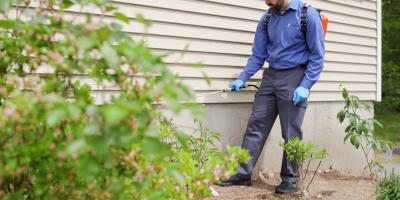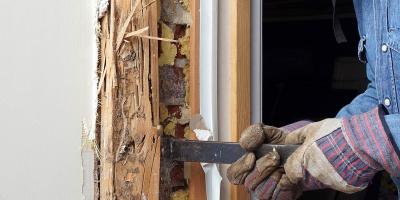Ants, Gel Baits, Kids, and Pets

Ants are everywhere this summer, and most likely you have witnessed some activity in and around your home. In New England, for the most part, we do battle with 3 key ant species: pavement ants, carpenter ants, and odorous house ants. While there are other ant species we occasionally manage, these three species pose the greatest concerns for homeowners and businesses alike.
Ants are sophisticated animals with highly structured colony and communication systems. Ant foragers relentlessly search for food. Once a source is identified, the entire colony will know about it in short order. Ants communicate food, water, and shelter (future nest-site) locations through chemical and physical foraging trails (pathways for others to follow) from the nest to resources and back. These chemicals are known as pheromones. There are various types of pheromones each dictating a specialized response for mating, foraging, defense, colony movements, and so on. Ants have a hierarchal social structure where the queen wields all the power and controls colony activities, including the production of more workers/colony members.
Therefore, the goal of ant control is to eliminate ant queens:
Ants are social insects which means that only queens are reproductive. Queens can produce hundreds of offspring each day! Therefore, ant management requires targeting this royal’s demise. Ant control can be very frustrating chiefly for 3 reasons:
1) Queens are highly protected deep within nests often great distances (a football field or more for carpenter ants) from foraging areas.
2) Foragers are the ants that bother us, but they only represent a very small slice (3-10% at most) of the colony.
3) Moreover, foragers are expendable! Workers don’t take on this most dangerous task until they are in the waning days of their lives. These “old females” are easily replaced.
Sometimes nest locations are obvious, as with pavement and mound-building ants. In these instances, the fight can be taken right to the nest. For carpenter and other ants, nest-sites are hidden inside walls, timbers, and other structural elements. Ant baits are an essential control strategy for such hidden/inaccessible nests. In this way, ant foragers take the fight directly to the nest for us by contaminating queens and other nestmates. Controlling ants by eliminating ant foragers is a time and labor-intensive task and rarely is successful. Baits yield more rapid and long-lasting control.
What type of ant bait does JP Pest Services use and why is this control tactic preferred?
Ant gel baits are among the least toxic control materials we use. Some baits are designed to mimic the sweet “nectar” (honeydew or poop produced by plant sucking insects, like aphids) that ants crave. The goal is to provide foraging ants a low enough dose of a toxin to keep them alive for 12 to 24 hours after consuming it. Ants know where their nest is; often we do not! In this way, your JP Pest Service Professional can be certain the toxin is delivered where it is most needed - to the nest. Once there, foragers share this bait with queens and other nestmates. Remarkably, these materials control more individuals than those that consume and share baits. Tertiary recipients (the third individual in this bait “bucket brigade” and “sanitation” ants – those that remove dead nestmates) also die. In the hands of expertly trained JP Service Professionals, these tools are highly effective and will eliminate entire colonies of ants.
Are there concerns when ant baits are used near children or pets?
At JP Pest Services, we are guided by the principle that applying control materials correctly, by making precision placements into cracks and crevices, is key to protecting people, especially children, as well as pets, and the environment. Moreover, the dose makes the poison. This means that even water is toxic if the dose is high enough. Recall that toxin levels in ant baits are low enough to keep ants alive for at least 12 hours. Safety comes first at JP, and we always secure all our materials, watch-over products, and lock our vehicles/supplies. Even so, such products are inherently less toxic since children and pets are hundreds of times larger than ants. JP Pest Service Professionals do not carry or transport sufficient bait to cause harm (to people, children, pets, or the environment).
Bottom line:
Successful management of ant populations requires expertise and knowledge. At JP, our Service Professionals are thoroughly trained to identify all common ant species within our service range. In addition, our board-certified entomologists and other experts inform everyone about the biology and habits of New England’s key ant species. All this continuing education and field training leads to successful ant management programs that yield results customers’ desire.
Ant control, like all integrated pest management issues (IPM), requires expertise, experience, and attention to detail. There is no silver bullet or magic pill – even highly effective ant baits must be used wisely and in conjunction with other techniques. JP Pest Services’ highly trained Service Professionals have the skill and training to apply ant baits and other decisive control strategies in an effective manner. JP Pest Services is ready to make ants sorry they ever invaded your home or business!



